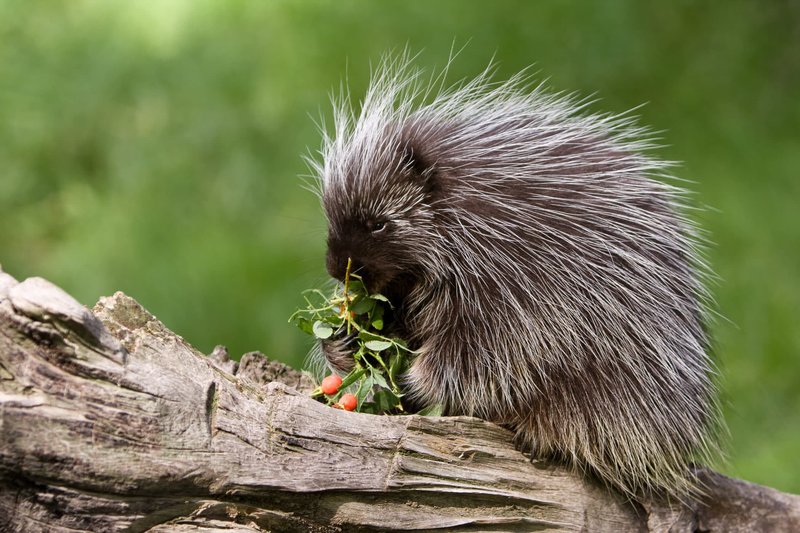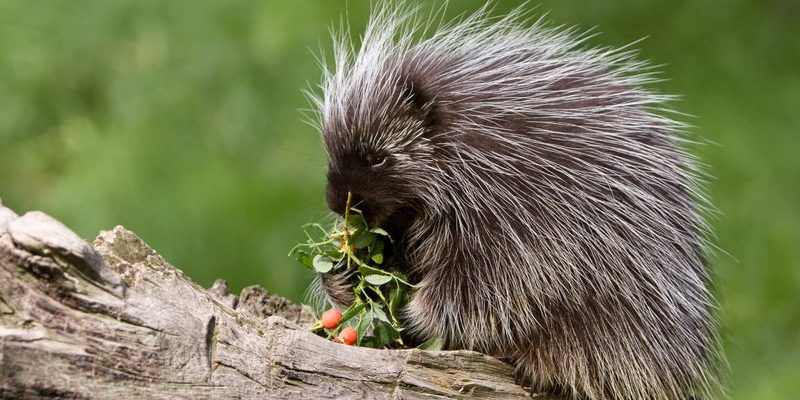
First, let’s understand what a porcupine is. These fascinating mammals belong to the rodent family and are recognized by their sharp quills. When threatened, a porcupine’s first instinct isn’t to attack but to defend itself. It’s like they have built-in armor! But even so, you might be wondering how dangerous they really are to humans. In this article, we’ll explore just that, shedding light on their behavior, the risks involved, and how to safely coexist with these prickly pals.
What Are Porcupines?
Porcupines are among the largest rodents in North America, with a few species found in South America and Asia. They typically weigh between 20 to 40 pounds and can grow up to two and a half feet long, not including their bushy tails. Their most famous feature, of course, is their *quills*—sharp, needle-like spines that cover their backs. It’s like wearing a hedgehog costume but in a much more stylish way!
These creatures are primarily nocturnal, meaning they’re most active at night. During the day, you’ll likely find them napping in trees or hiding in den-like burrows. They mainly eat leaves, bark, and fruits, making them herbivores. So, you might think they’re pretty chill, right? But here’s the thing: when threatened, a porcupine can be quite defensive.
How Do Porcupines Defend Themselves?
Imagine you’re cornered and feel threatened; your instinct is to protect yourself! Porcupines do the same. Instead of running away, they turn around and face their attacker. Here’s how they use their quills:
- Threat Display: When a porcupine senses danger, it might hiss or growl to warn off potential threats.
- Quill Erection: The quills on their backs stand straight up, making them look larger and more intimidating.
- Charging: If an attacker gets too close, a porcupine can charge backward, aiming its quills at the threat.
The quills are barbed, which means they can easily embed themselves in flesh. If a porcupine feels cornered, it’s not afraid to use its quills defensively. So, while they’re not aggressive by nature, they can definitely cause harm if they feel threatened.
Are Porcupine Quills Dangerous to Humans?
You might be wondering, just how dangerous are those quills? The short answer is: they can be quite hazardous! If you accidentally get too close to a porcupine and provoke it, the quills can penetrate your skin. This can lead to painful injuries that may require medical attention.
Here’s what you should know about porcupine quills:
– They are made of keratin, the same material found in human nails.
– Once embedded, they can be tricky to remove because of their barbed structure.
– Infections can occur if quills are not properly treated.
But let’s put this into perspective: attacks are rare. Most porcupines would rather avoid human interaction altogether. They aren’t out hunting for trouble—they’d rather munch on some tasty bark!
What Should You Do If You Encounter a Porcupine?
Encountering a porcupine in the wild can be a unique experience, but it’s essential to know how to handle it. Here are a few tips to keep in mind to avoid any prickly situations:
- Keep Your Distance: Give porcupines plenty of space. Observe from afar and don’t approach them.
- Stay Calm: If you see one, stay calm and back away slowly. Sudden movements might startle it.
- Educate Others: Teach friends and family about porcupines and their behavior to promote awareness.
If a porcupine feels cornered, it will act defensively. So, keeping a respectful distance is key to avoiding any “quilly” encounters.
What Other Animals Might Be Dangerous to Humans?
Porcupines aren’t the only animals that can pose a risk. In the wild, there are several creatures that require caution. Here’s a quick list to consider:
- Snakes: Many snakes will strike if they feel threatened, and some can be venomous.
- Wild Boars: These animals can charge and are known for their aggression when surprised.
- Raccoons: While they look cute, raccoons can carry rabies and may bite if cornered.
While porcupines are fascinating, it’s important to remember that many wild animals can be dangerous. Understanding their behavior can help keep both you and the animals safe.
How to Live in Harmony with Porcupines
So, how can we coexist with porcupines without fear? Here are some strategies to live in harmony with these unique creatures:
- Secure Garbage: Porcupines are often attracted to easy food sources. Keep trash cans covered and secure.
- Fencing: If you live in an area with porcupines, consider fencing off gardens or trees to prevent damage.
- Respect Their Space: Remember that porcupines are wild animals. Let them roam freely in their natural habitat.
By taking these steps, you can enjoy the beauty of wildlife without putting yourself in harm’s way.
In conclusion, while porcupines have a reputation for being dangerous due to their quills, they typically avoid conflict. They prefer to keep to themselves and will only act defensively if threatened. Understanding their behavior and respecting their space can help prevent any accidents.
So, the next time you hear about porcupines, remember: they’re not out to get you. They’re just trying to live their lives peacefully, much like the rest of us. With a little knowledge and respect, we can all share this beautiful world together—spines and all!

